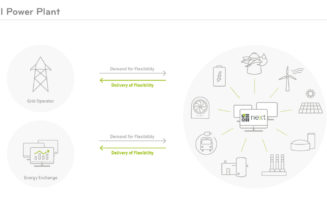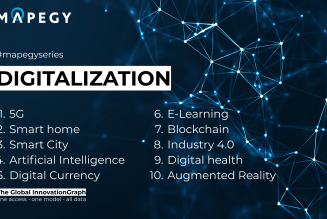Employees across the world are concerned about the impact automation could have on them, brought into clear focus as the world navigates one of the greatest periods of uncertainty in history.
Data shows that AI has the potential to create more jobs than it takes away, augmenting human ingenuity and removing many of the mundane tasks people don’t enjoy. However, organisations still need to be deliberate around how they address change management if they want their staff to embrace it. The question is what does an effective change management strategy look like?
According to Microsoft’s AI Maturity in the Middle East and Africa report, regional leaders in AI have achieved success by focusing on three key areas:
1. An open culture reduces uncertainty
/* custom css */
.tdi_3_199.td-a-rec-img{ text-align: left; }.tdi_3_199.td-a-rec-img img{ margin: 0 auto 0 0; }
Among companies deploying advanced AI, employees tend to be less concerned about the risk the technology poses to their jobs. One reason for this is that AI-mature companies are generally successful at creating open cultures. They understand that to achieve buy-in from employees on anything, they need to reduce uncertainty by making the changes that will be brought about by AI more tangible.
This starts with company leaders articulating a clear vision for any AI initiatives in the pipeline. It’s also key that these initiatives extend across the organisation because when the benefits of AI are witnessed by a limited set of business functions, the technology is often not seen as relevant more broadly.
On the other hand, exposing employees across the company to work in progress not only fosters collaboration and learning across functions but also helps employees understand the opportunities presented by AI on a far more personal level.
2. Experimentation creates comfort
Employees from all areas of the company need to be comfortable with AI before businesses can begin reaping its benefits. Though the technology is getting a lot of attention from top management across the region, just 26% of companies surveyed in the AI Maturity report say their non-managerial levels are actively involved with AI.
To ensure employees from across different levels and functions experience AI, companies should experiment more broadly with AI pilot projects.
In fact, businesses that are successfully working with AI tend to take an agile, iterative approach to projects. Through shorter project cycles, they can more easily explore the potential of the technology because they’re constantly receiving feedback on what works and what doesn’t. While this helps to build internal knowledge and capabilities, it also demonstrates the value of AI to more people more quickly.
AI leaders understand that an agile culture enables AI. It can either stifle forward momentum in organisations or enable the potential of AI to be realised from top to bottom.
A case in point – a South African-based information and communications technology company actively encourages staff to innovate and familiarise themselves with new technologies while senior leadership is in the process of shaping strategy and taking it to market.
The field of AI is extremely diverse and through this approach, the organisation is able to identify key areas where the technology adds value. Early pilots are focused on optimising operations and shared services, while at the same time enabling engagement with customers to understand their needs and develop appropriate solutions.
3. Involve employees through reskilling
One of the most effective ways to ensure employees are enthusiastic about engaging in AI activities is to reskill them so that they become part of the AI journey.
In fact, experts agree that even employees not directly involved should still have a basic understanding of what AI is and what it can do. This not only ensures employees feel included in the process but also provides them with a much clearer idea of how AI will benefit them on a personal level.
It’s easy to imagine that companies advanced in AI are successful purely because of their tech capabilities. But in truth, progress in AI is as reliant on human-centric competencies as it is on technical skill. It means that if companies want to take on new tech initiatives and succeed, they must ensure they put their people first.
By Lillian Barnard, MD of Microsoft South Africa










